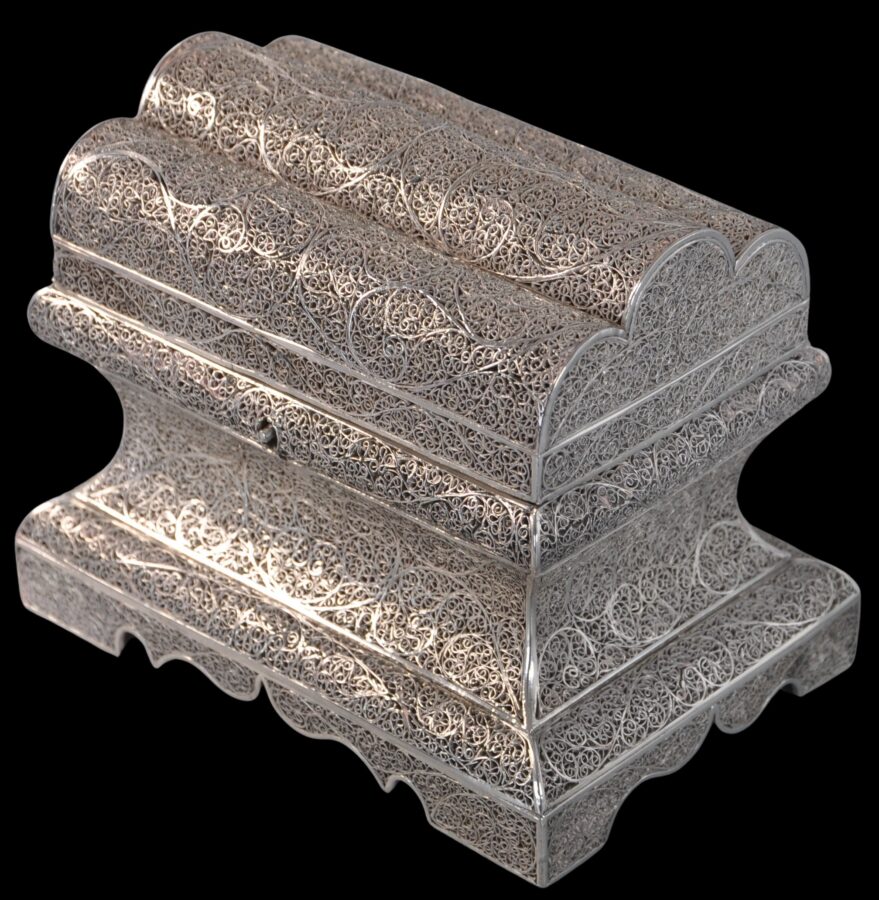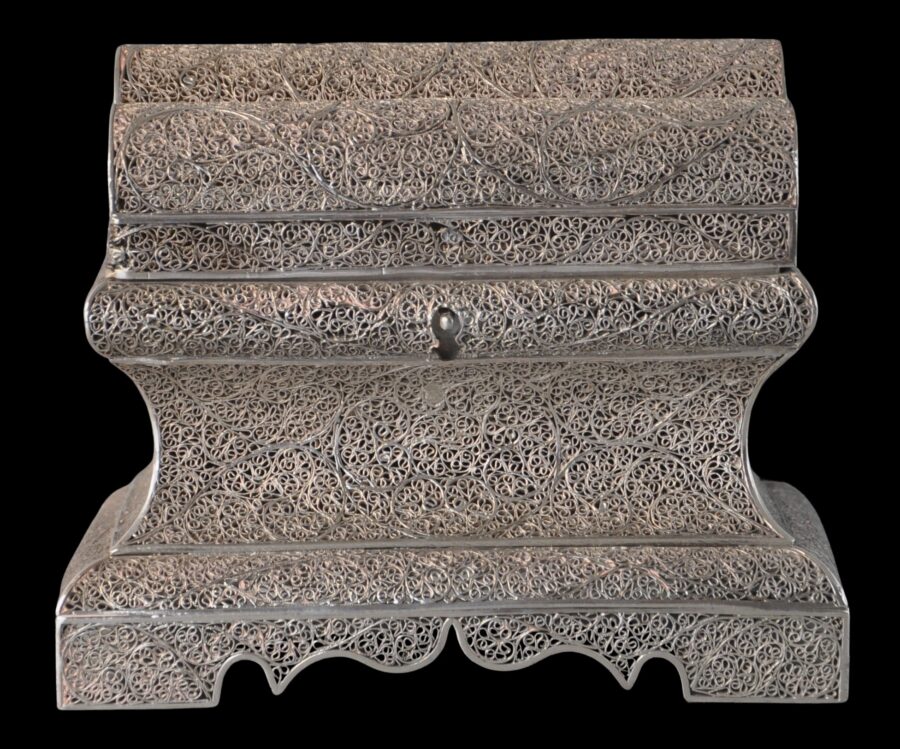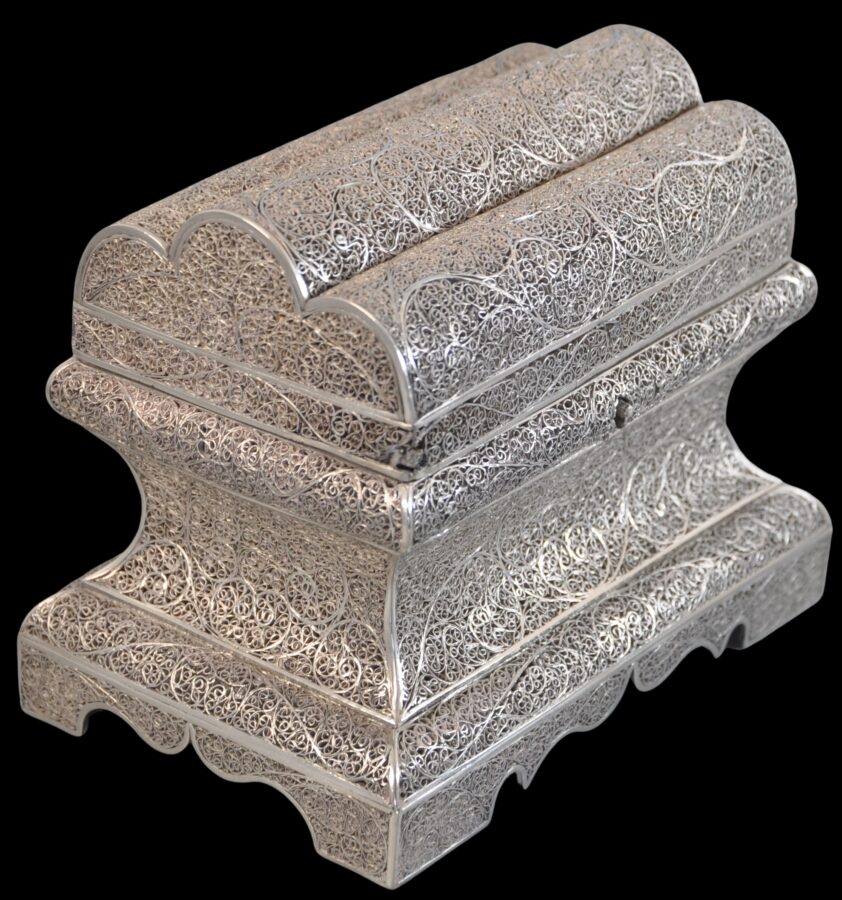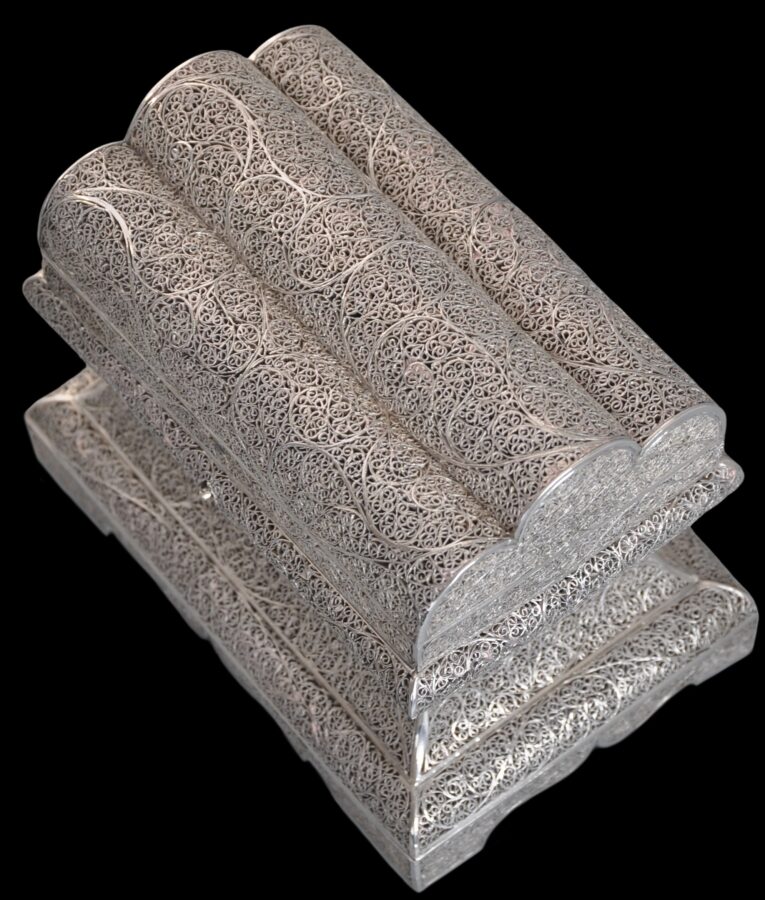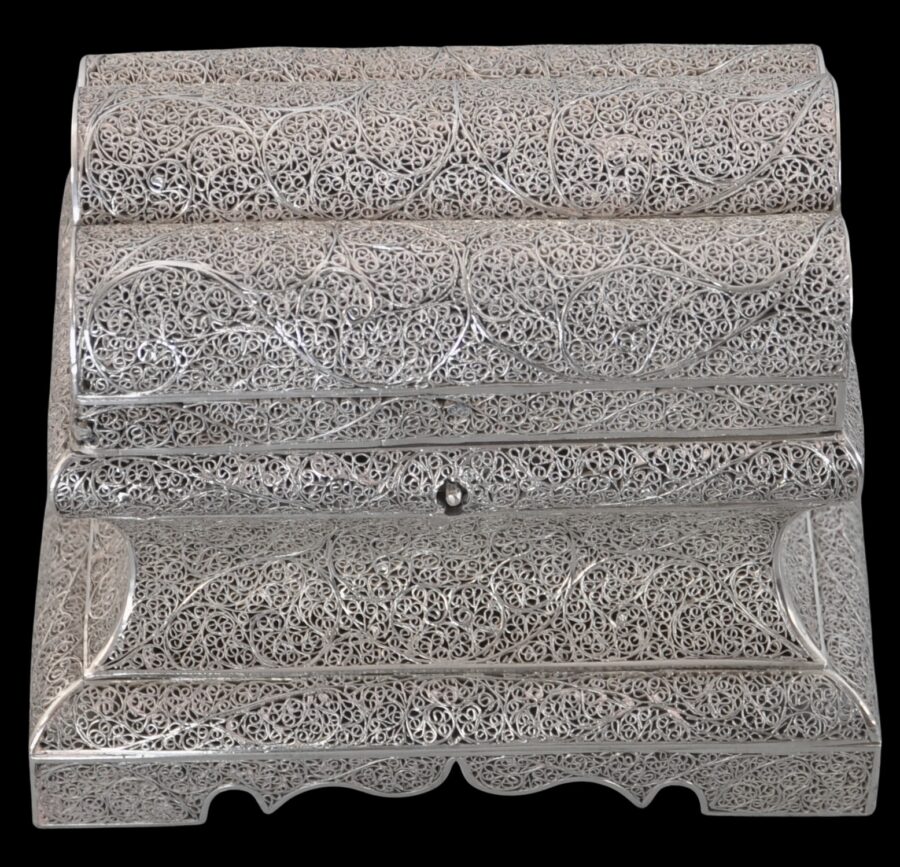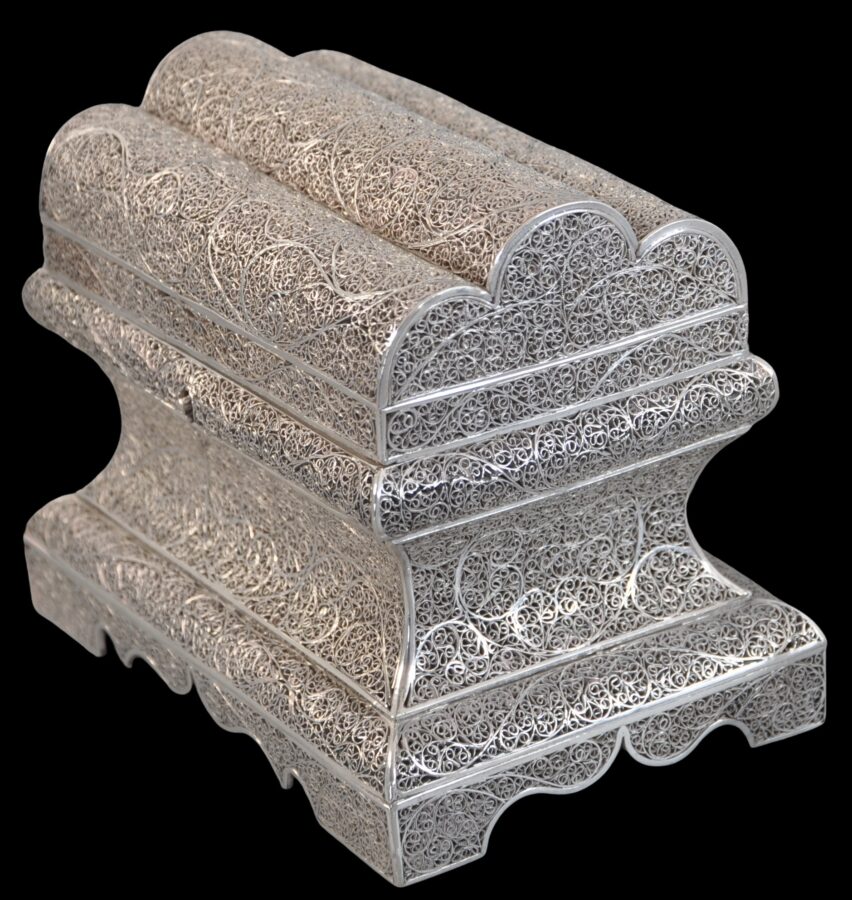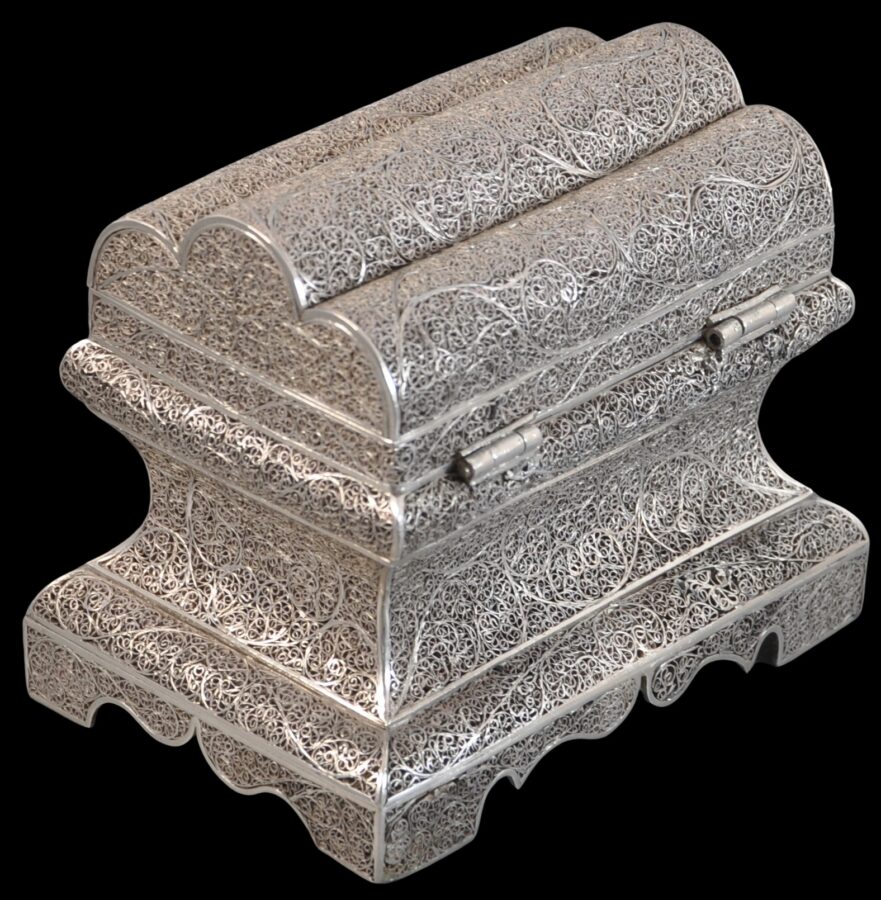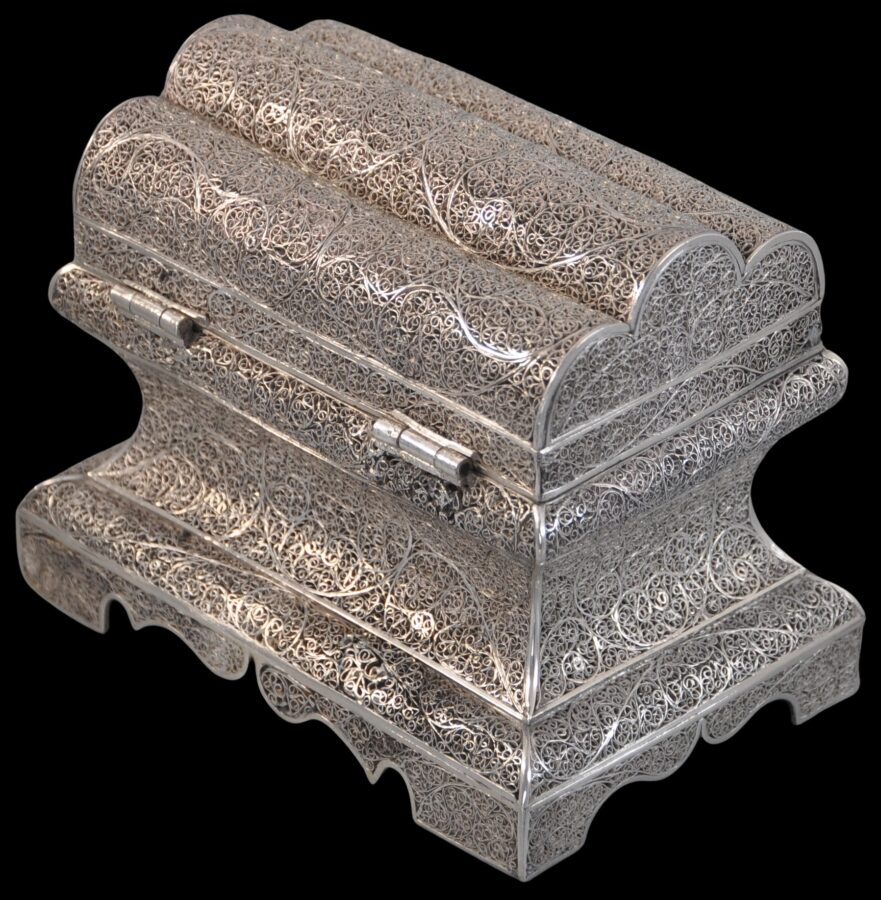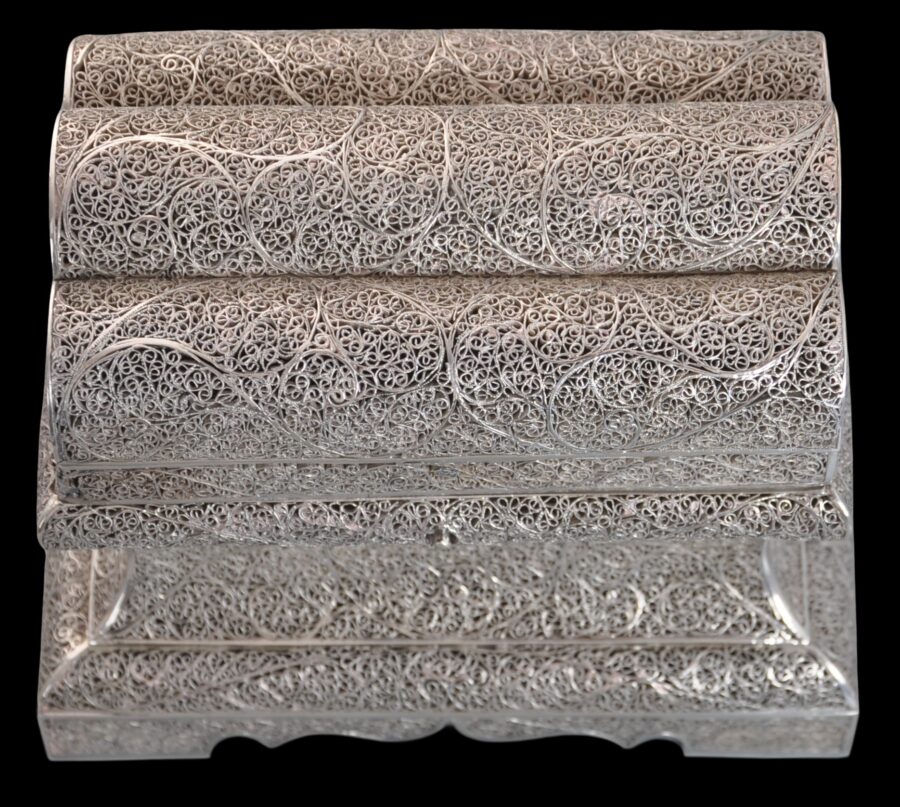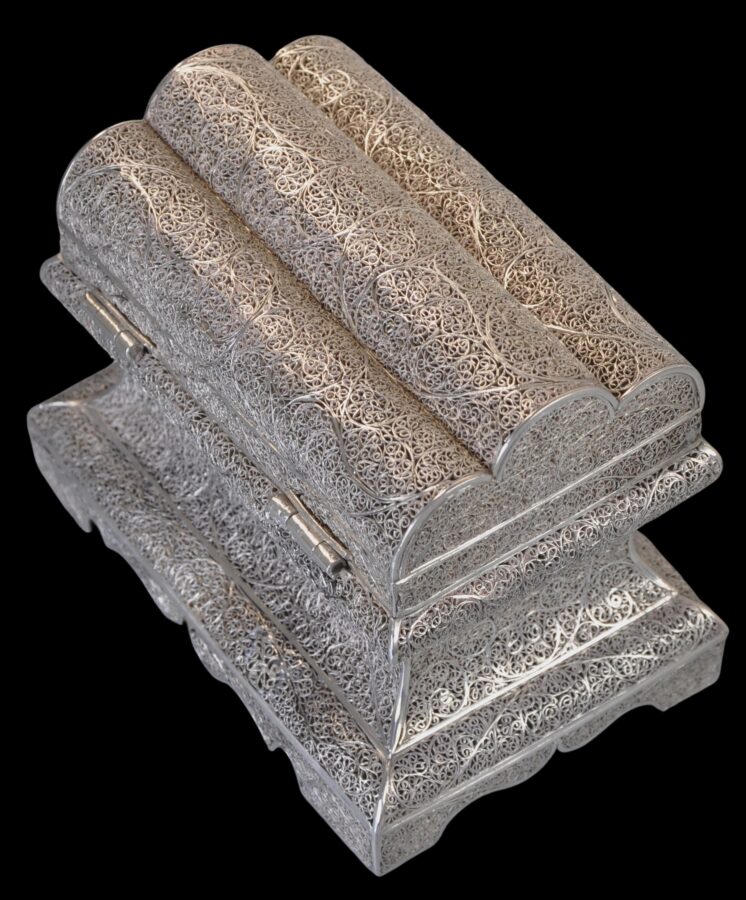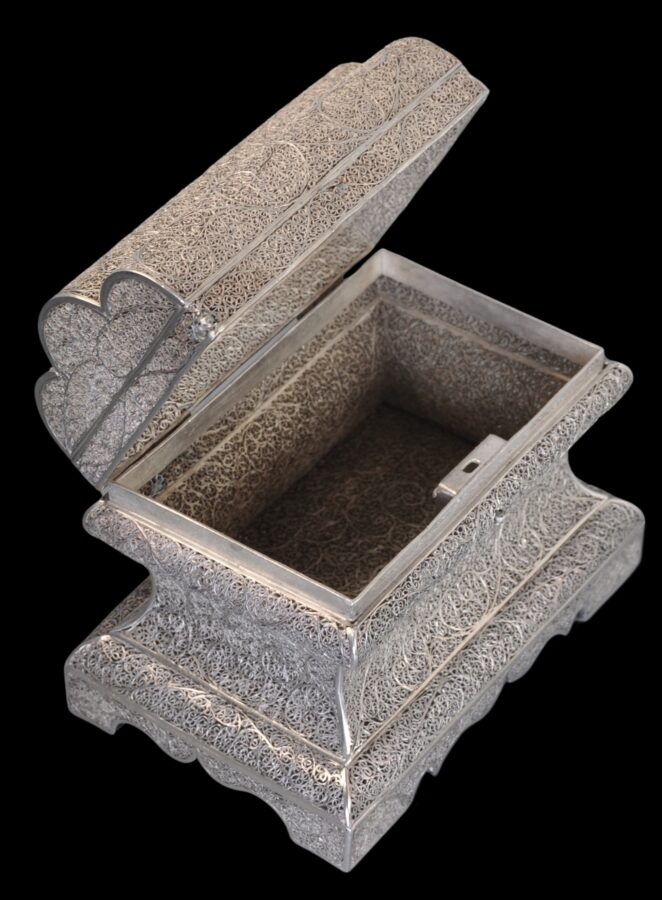Dutch colonial silver filigree items of the 17th and 18th centuries took on a surprisingly wide variety of forms but among these, the form of this chest or box is among the oddest.
The silver used is pure or close to it, and the box is entirely composed of silver filigree panels comprising both fine and broader wires, including the base, which marks this example out as particularly luxurious when more usually, the base (which almost no-one sees) would have been of hammered silver sheet.
Most probably, the box is the product of silversmiths working in colonial Batavia in the Dutch East Indies (Indonesia today). Some researchers argue that such filigree work was produced in India because examples are sometimes found in India but it is more likely that such examples were exported to India, for the local Islamic market, as part of the intra-Asia trade undertaken by the Dutch East Indies Company (VOC).
The box has a scalloped hinged lid, an hour-glass type body, and feet with lambrequin skirting all the way around the base.
The rococo-inspired, scalloped lid is the same as that on a chest in the Winter Palace Collection in Russia and attributed to the mid-17th century (see Piotrovsky, 2006, p. 43 & p. 111). The authors ascribe the piece to Goa in India, but it now seems more likely that such items were made in the Dutch East Indies.
The authors also comment that such boxes were used to hold church valuables and indeed, this could explain the shape of this box – it might have been intended as a reliquary perhaps for the relics of a saint.
The main objective of the VOC was to bring spices from Asia to Europe. But the VOC also established a complex series of intra-Asia trade networks whereby items were purchased in one part of Asia to be sold in another for profit. One study identifies 1,059 ships in the employ of the VOC which routinely took part in trade within Asia between 1595 and 1660 (Parthesius, 2010, p. 13). Textiles were a mainstay of intra-Asia trade but other consignments included luxury goods, timber, Chinese porcelain, and even elephants. Items of silver were produced in and near Batavia at the behest of the VOC and there was a history of silver filigree production in the area. William Marsden in his treatise on Sumatra first published in 1784 includes an extensive description of gold and silver filigree work carried out in Sumatra, with the observation that: ‘there being no manufacture in that part of the world, and perhaps I might be justified in saying, in any part of the world, that has been more admired and celebrated than the fine gold and silver filigree of Sumatra. This indeed is, strictly speaking, the work of the Malayan inhabitants’. He adds that ‘The [local] Chinese also make filigree, mostly of silver, which looks elegant, but wants likewise the extraordinary delicacy of the Malayan work.’ Sumatra was an important market for Indian-made textiles imported by the VOC. Pepper and gold were among the goods that the VOC received in payment. Undoubtedly, filigree work was too, all of which would have been trans-shipped through Batavia. It is a possibility that has been explored by Veenendaal (2014) who illustrates a series of chests with similar filigree which he attributes to West Sumatra, circa 1700.
The box here is in fine condition. There are are no significant losses. There is a small area of possible repair to small part of one edge, and some small areas where the filigree has detached from the main frame but this is relatively trivial given the apparent uniqueness of this box.
It is fitted with the original lock; the key is no longer present. The box has a lovely patina and obvious significant age.
References
Bennett, J., & R. Kelty, Treasure Ships: Art in the Age of Spices, Art Gallery of South Australia, 2014.
Corrigan, K., J. van Campen, & F. Diercks (eds.), Asian in Amsterdam: The Culture of Luxury in the Golden Age, Peabody Essex Museum/Rijksmuseum, 2015.
Eliens, T.M., Silver from Batavia/Zilver uit Batavia, Gemeentemuseum Den Haag/W Books, 2012.
Jordan, A. et al, The Heritage of Rauluchantim, Museu de Sao Roque, 1996.
Marsden, W., The History of Sumatra: Containing an Account of the Government, Laws, Customs and Manners of the Native Inhabitants, with a Description of the Natural Productions, and a Relation of the Political State of that Island, 1784.
Piotrovsky, M. et al, Silver: Wonders from the East – Filigree of the Tsars, Lund Humphries/Hermitage Amsterdam, 2006.
Veenendaal, J., Asian Art and the Dutch Taste, Waanders Uitgevers Zwolle, 2014.
Voskuil-Groenewegen, S.M. et al, Zilver uit de tijd van de Verenigde Oostindische Compagnie, Waanders Uitgevers, 1998.


